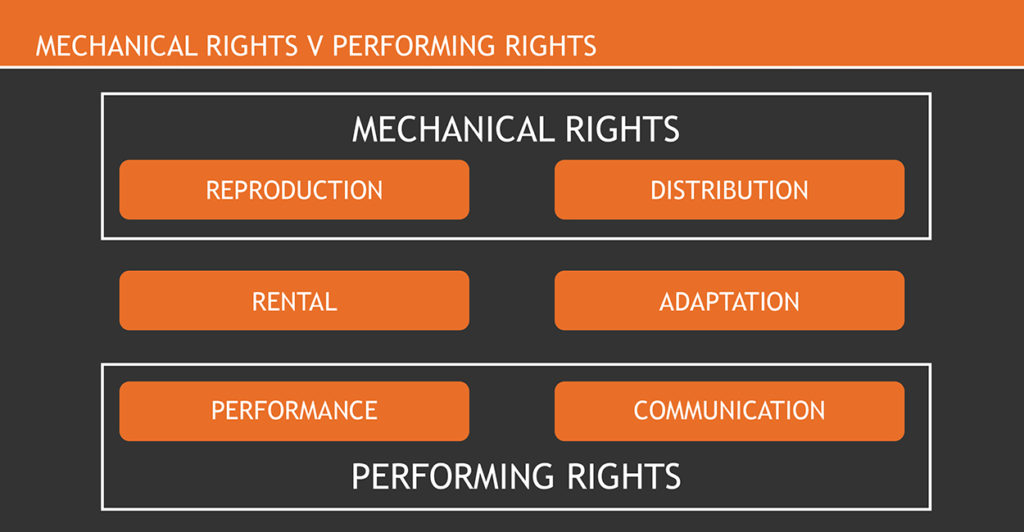This website uses cookies so that we can provide you with the best user experience possible. Cookie information is stored in your browser and performs functions such as recognising you when you return to our website and helping our team to understand which sections of the website you find most interesting and useful.
CMU Trends In Ten Music Copyright Library
CMU Trends In Ten: Copyright Jargon
By Chris Cooke | Last Updated: April 2020

This is a ten step guide to copyright jargon, providing definitions, background and context to ten copyright terms people use a lot in the music industry.


01. Mechanical Rights v Performing Rights
Copyright is all about control. Because of copyright, creators can control what happens to the outputs of their creativity. So, from a music perspective, they can control what happens to their songs and their recordings.
Copyright law actually provides a list of specific controls. The list – and terminology – varies from country to country, but commonly includes these six: the reproduction control, the distribution control, the rental control, the adaptation control, the performance control and the communication control.
In the music industry it is common to group together the reproduction control (so the actual copying of a work) and the distribution control (the subsequent distribution of those copies). Music publishers call these two controls together the mechanical rights.
Traditionally record companies were the main customers of mechanical rights because – when labels pressed and sold records – they were exploiting the reproduction and distribution controls of another company’s song rights (as well as the same controls of the recording rights the label itself owned). However, download platforms, streaming services and sync clients also exploit the mechanical rights.
The music industry also commonly groups together the performance control (when music gets played or performed in a public space) and the communication control (when music gets broadcast or webcast) and refers to these as the performing rights. Again, this is generally a term used by music publishers. Record labels now often use an alternative term for the same thing – which brings us to the so called neighbouring rights.






